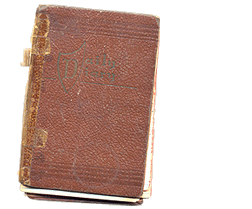
August 10, 1945: “Later in the evening, Sis and I went to the Southtown and saw Salty O'Rourke and The Man In Half Moon Street. They were both super.”
Reading the description of the Southtown below, I was reminded of the very subtle, blue indirect lighting within the archways of the theater. While I was very young, I do remember the wonderful effect in a vague sort of way. Other theaters had similar lighting. I tried to reproduce the experience in the quick and crude Photoshopped effort above; not very well, I'm afraid. But maybe you get the idea.
From the American Theater Organ Society:
While most large cities could claim at least one neighborhood theatre that was large and opulent enough to rival those downtown, only New York and Chicago had them in droves. The Southtown was the last of that genre, the last big house put up by Balaban & Katz and the final large scale design from Rapp & Rapp, who received about $54,000 for the honor.
The Southtown Theatre was built on 63rd Street near Halsted, about two miles west of the epoch-making Tivoli, and represented a significant change in site selection policy. Proximity to transit lines, and especially to transfer points, remained important, but America now had wheels of its own, so Balaban & Katz opted for a two-block tract with room enough for an uncrowded plan and parking for 1000 cars. In this same connection, a protected motor entrance was provided on one side of the lobby.
All this real estate allowed for lobbies and foyers galore. The separation of traffic, a particular specialty of Rapp & Rapp, was greatly facilitated by a separate exit lobby, with its own doors, adjacent to the main entrance. Outgoing patrons could pass directly from the foyers into this area without ever encountering the hoards waiting in the main lobbies. Yet another set of exits appeared at the opposite end of the grand foyer.
The auditorium was equally expansive, with seven aisles and a balcony overhang of only thirty feet. The shallow, lightly raked balcony with "boxes" stepping down to the organ screens was a Rapp & Rapp feature which made the theatres employing it seem even larger than they actually were. The arches in the sidewalls received the Rapps' semi-atmospheric treatment: deep niches lit in blue and festooned with artificial foliage. Lighting was almost entirely indirect, the only major fixtures being those in front of the organ screens.
A Depression child, the Southtown Theatre opened with a double feature policy and no stage show. The second-hand organ provided the only live music. The orchestra pit appears never to have been used. When live entertainment was brought in, the bands always played from the stage. The theatre closed in 1958 and was acquired by Carr's department store, which adapted it for their purposes with little change. A store for longer than it was a theatre, the Southtown has been demolished.

No comments:
Post a Comment